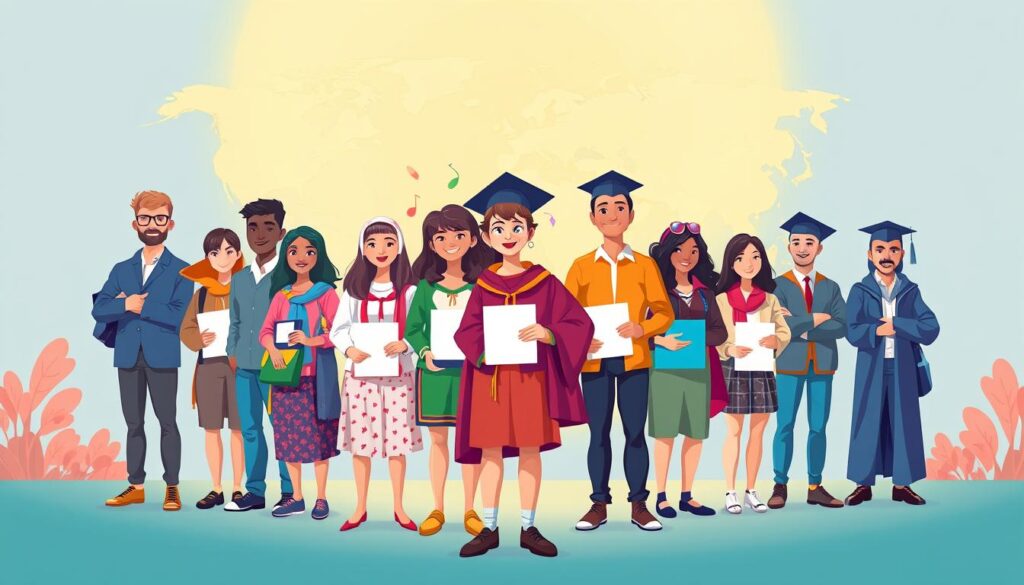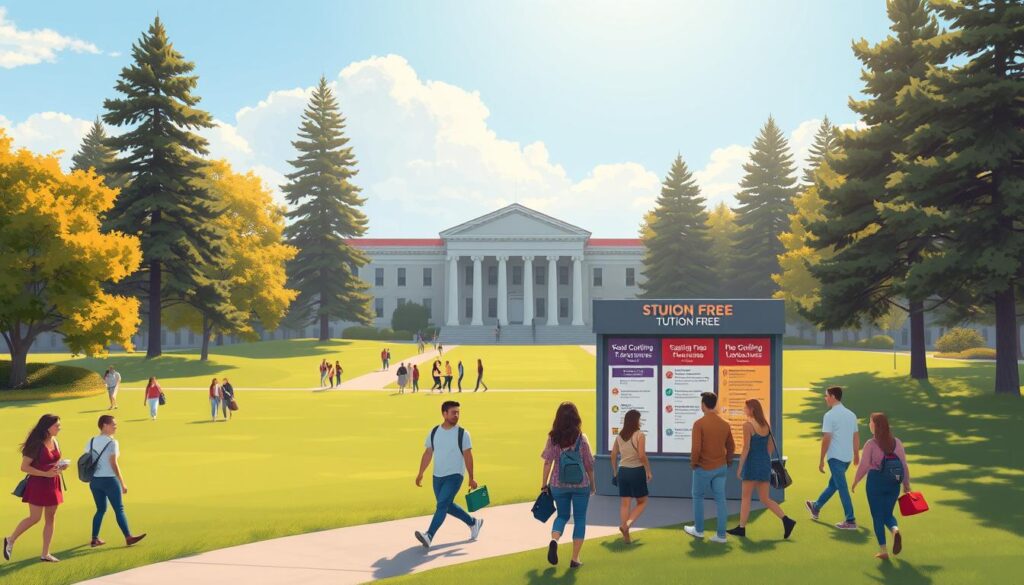Studying in the United States is a dream shared by millions of students around the world. But for many, the high tuition fees and cost of living can feel like an impossible barrier. The good news? There are real, proven pathways to study in the U.S. for free or at a very low cost through scholarships, tuition-free universities, fellowships, work-study programs, and government-funded opportunities.
This 2025 updated guide gives you a step-by-step roadmap, external resources, and top strategies to make your American education dream a reality — without drowning in debt.

🎓 1. Why Study in the US in 2025?
The U.S. is home to many of the world’s leading universities, cutting-edge research labs, and vibrant international student communities. It remains one of the top destinations for students seeking:
- World-class education recognized globally
- Opportunities for innovation, research, and entrepreneurship
- A powerful international network of professionals and alumni
- Flexible work opportunities during and after studies
In 2025, many institutions have expanded their financial aid and scholarship programs for international students, making it easier than ever to access quality education.
💰 2. Fully Funded Scholarships for International Students (2025 Updates)
Scholarships are the most direct way to study in the U.S. for free. Some scholarships cover full tuition, living expenses, flights, and insurance.
Top Fully Funded Scholarships in 2025
- Fulbright Program – https://foreign.fulbrightonline.org/
- Hubert H. Humphrey Fellowship Program – https://www.humphreyfellowship.org/
- AAUW International Fellowships – https://www.aauw.org
- Knight-Hennessy Scholars at Stanford – https://knight-hennessy.stanford.edu/
- Yale International Scholarships – https://finaid.yale.edu/
- Joint Japan/World Bank Scholarship – https://www.worldbank.org
Scholarship Trends in 2025
- More universities now offer automatic merit scholarships at admission.
- Platforms like Bold.org provide no-essay scholarships updated monthly.
- Scholarship deadlines for 2026–2027 have already started (October 2025 onwards).
- African and Asian applicants are receiving increased attention through diversity programs.
👉 More scholarship platforms: InternationalStudent.com, Scholarship Portal, GoAbroad.com

🏫 3. Tuition-Free and Low-Cost Universities in the US
Some U.S. colleges offer free tuition to admitted students, including international students.
Best Tuition-Free Colleges in 2025
- Berea College – https://www.berea.edu/
- College of the Ozarks – https://www.cofo.edu/
- Deep Springs College – https://www.deepsprings.edu/
- Webb Institute – https://www.webb.edu/
- Macaulay Honors College – https://macaulay.cuny.edu/
🧾 4. FAFSA and Other Financial Aid Options
While FAFSA is mainly for U.S. citizens, some universities allow international students to apply for institutional financial aid.
- The FAFSA for the 2026–2027 academic year opened in September 2025.
- Many schools offer institutional grants and need-based aid.
- NGOs and foundations often provide private grants.
💼 5. Work-Study and On-Campus Jobs
If you’re on an F-1 student visa, you may be eligible to work part-time:
- Up to 20 hours/week during classes
- Full-time during school breaks
- Optional Practical Training (OPT) after graduation
- Curricular Practical Training (CPT) during studies
Common on-campus jobs:
- Library or lab assistant
- IT support
- Campus cafe or bookstore
- Research assistant
🕒 6. Timeline: When to Apply
| Timeline | Key Actions |
|---|---|
| Oct 2025 – Jan 2026 | Apply for major scholarships (Fulbright, Knight-Hennessy, etc.) |
| Feb 2026 – Apr 2026 | Receive admission offers, scholarship interviews |
| May 2026 – Jul 2026 | Prepare visa application, gather financial proof |
| Aug 2026 – Sep 2026 | Fly to the U.S. and begin orientation |
🌍 7. Additional Cost-Saving Strategies
- Start at a community college and transfer later.
- Share housing to reduce rent.
- Use student discounts for transportation and services.
- Apply for assistantships and internships.
- EduPass offers budgeting tips for students.
📑 8. Visa & Immigration Tips (October 2025)
- Apply early — interview slots fill up fast.
- Bring your I-20, acceptance letter, proof of funds, SEVIS receipt, and transcripts.
- Be ready to explain how you’ll fund your studies.
- Know the F-1 visa rules.
🧭 9. Resources to Find Scholarships & Programs
🧠 10. Application Tips to Increase Your Chances
- Start 12–18 months early.
- Build a strong academic profile.
- Write a powerful personal statement.
- Secure strong recommendation letters.
- Tailor each application.
- Prepare early for TOEFL or IELTS.
📌 11. Hidden Opportunities Many Students Miss
- Departmental Scholarships – check program websites.
- Assistantships and Fellowships – for graduate students.
- Private Foundations like Open Society Foundations.
- Embassy Programs – small grants for local students.
✨ 12. After Graduation: Work Opportunities
- Optional Practical Training (OPT) – up to 12 months of work after graduation.
- STEM OPT Extension – up to 36 months for STEM students.
- H-1B visa sponsorship – for skilled workers.
👉 USCIS
🚀 13. Success Stories
- African students have won Fulbright scholarships covering full costs.
- A Moroccan student attended Berea College with zero tuition.
- Knight-Hennessy scholars from Africa have joined top U.S. universities.
📝 14. Common Mistakes to Avoid
- Applying late or missing deadlines
- Not customizing personal statements
- Ignoring smaller scholarships
- Relying on one funding source
- Not preparing for visa interviews
🧭 15. Final Checklist Before You Apply
- List your target universities and scholarships
- Gather transcripts and test scores
- Write personal statements
- Apply early for scholarships
- Book visa appointments in advance
- Prepare living cost budget
📢 Conclusion
Studying in the U.S. for free in 2025 isn’t a myth — it’s absolutely possible. Thousands of students from around the world do it every year through fully funded scholarships, tuition-free colleges, and government programs.
The key is early preparation, diversifying your applications, and staying consistent. Whether you aim for Harvard, Stanford, or Berea College, there’s a path for you.
Your education journey starts with your first application. Start now — your future self will thank you.






